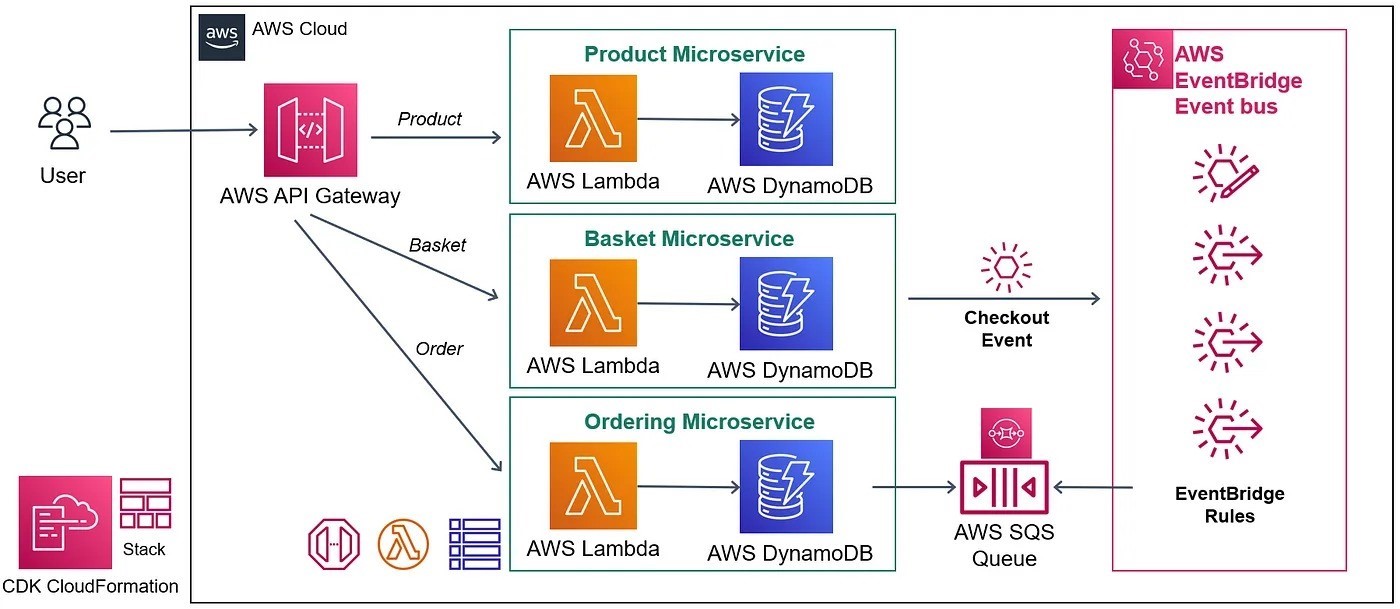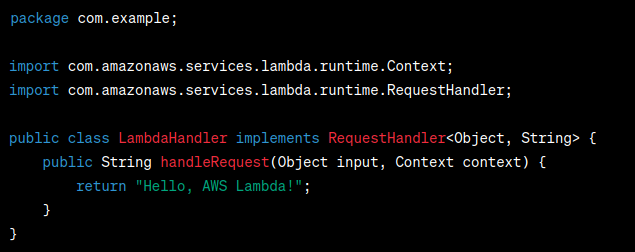
Introduction to AWS Lambda
AWS Lambda, an imaginative and effective cloud-based platform that permits developers to run their code without the complexity of overseeing servers, introduces you to the universe of serverless computing.
Whether you’re new to AWS Lambda or need to look for some way to improve on your insight, this thorough guide will walk you through the ins and outs of Lambda functions, from the fundamentals of setting up your first function to more complex subjects like managing resources and optimizing performance.
Toward the finish of this, you’ll have a strong groundwork to start utilizing AWS Lambda for your own projects, as well as a large number of ideas and best practices to make your serverless journey a smooth and successful one. Let’s get started!
What is AWS Lambda?
AWS Lambda is an Amazon Web Services (AWS) serverless computing technology that allows developers to run code without installing or managing servers and automatically grows compute capacity based on incoming requests or events.
Benefits of AWS Lambda for Cloud Computing
- Event-Driven: AWS Lambda functions are triggered by events. These events can originate from various sources, including HTTP requests through Amazon API Gateway, changes to data in Amazon DynamoDB, messages from Amazon Simple Queue Service (SQS), file uploads to Amazon S3, custom events, and more.
- Auto-Scaling: AWS Lambda automatically scales your functions in response to the number of incoming events. It can handle a single request or millions of requests simultaneously, ensuring that there are enough resources allocated to process each event efficiently.
- Pay-As-You-Go Pricing: With AWS Lambda, you only pay for the compute time your code consumes, measured in milliseconds. There are no upfront costs or charges for idle resources, making it cost-effective for applications with varying workloads.
- Supported Languages: AWS Lambda supports multiple programming languages, including Node.js, Python, Java, Ruby, Go, .NET Core, and custom runtime options. This allows developers to write functions in their preferred language.
- Stateless: Functions executed in AWS Lambda are designed to be stateless. Any required state or data must be stored externally, such as in databases, Amazon S3, or other AWS services.
- Custom Runtimes: In addition to the supported languages, you can create custom runtimes, allowing you to run code in almost any language as a Lambda function.
- Versioning and Aliases: AWS Lambda provides versioning and aliasing capabilities, allowing you to manage and control different versions of your functions. This is useful for deploying and testing new code without affecting the production environment.
- No Server Management: Lambda abstracts away the complexities of server management. You don’t need to provision, configure, or maintain servers. This saves you time and resources that can be better spent on developing and improving your code.
- Security and Compliance: AWS Lambda offers built-in security features, including Identity and Access Management (IAM) for fine-grained access control, VPC integration for private network access, and encryption for data at rest and in transit. AWS also provides compliance certifications for Lambda, making it suitable for regulated industries.
- Low Latency: Lambda functions can execute quickly, often within milliseconds. This low latency is essential for building responsive and real-time applications.
- Easy Integration: Lambda seamlessly integrates with other AWS services, such as Amazon S3, DynamoDB, SQS, and more. This simplifies building complex, serverless architectures that leverage the entire AWS ecosystem.
Use Cases for AWS Lambda
- Real-time File Processing: Lambda can be triggered when files are uploaded to Amazon S3, allowing you to process, transform, or analyze the contents of the file in real time. This is useful for image and video transcoding, data validation, and log analysis.
- Web Application Backends: Lambda functions can power the backend of web applications by handling HTTP requests via Amazon API Gateway. You can build RESTful APIs, microservices, and serverless web applications.
- IoT (Internet of Things): AWS Lambda can process data from IoT devices and sensors, allowing you to react to events from connected devices in real time. It’s often used in combination with AWS IoT Core.
- Scheduled Tasks: Lambda can execute code on a schedule (e.g., cron-like jobs) to automate various tasks like data backups, report generation, and data clean-up.
- Data Processing and ETL: Lambda can process and transform data in real-time or batch mode. It can be triggered by changes in a database, new data arriving in a data stream (e.g., AWS Kinesis), or on a schedule (e.g., regular data imports).
- Custom APIs and Webhooks: Lambda can create custom APIs or webhooks for third-party integrations, allowing external systems to interact with your applications.
- User Authentication and Authorization: Lambda can be used to implement custom authentication and authorization logic for user access to resources, such as verifying JWT tokens or checking user permissions before granting access.
- Monitoring and Alerting: Lambda can monitor various AWS services and trigger alerts or take actions when specific conditions are met, such as scaling resources up or down based on metrics.
Key Concepts of AWS Lambda
Triggers:
Triggers are events that cause AWS Lambda functions to execute. When a specific event occurs, Lambda can be configured to respond automatically.
Some common trigger sources include:
- Amazon S3: Lambda can be triggered when objects are created, updated, or deleted in an S3 bucket.
- Amazon DynamoDB: Lambda can respond to changes in DynamoDB tables, such as new records being inserted, or existing ones being modified.
- Amazon API Gateway: Lambda can serve as the backend for RESTful APIs or web services, executing code in response to HTTP requests.
- AWS CloudWatch Events: You can create custom rules in CloudWatch to trigger Lambda functions based on various events, such as AWS service events or scheduled events (cron jobs).
- Custom Events: You can define custom events and use them to trigger Lambda functions within your application.
Execution Environment:
The execution environment refers to the infrastructure and resources allocated to run a specific instance of a Lambda function.
Here are some key points about the execution environment:
- Isolation: Each Lambda function execution is isolated from others. It doesn’t share resources or state with other executions.
- Statelessness: Lambda functions are designed to be stateless, meaning they don’t retain information between executions. Any data needed for subsequent executions must be stored externally, such as in a database or Amazon S3.
- Resource Allocation: AWS Lambda automatically allocates CPU power, memory, and network resources based on the function’s configuration. You specify the memory size, and CPU power scales proportionally.
Function Versions:
AWS Lambda allows you to create different versions of your Lambda functions. Each version represents a snapshot of your function’s code and configuration at a specific point in time.
Here’s how versions work:
- Immutable: Once you publish a version, it becomes immutable, meaning its code and configuration cannot be changed. This ensures that your production environment remains stable.
- Aliases: You can create aliases for your Lambda functions (e.g., “prod,” “dev,” “v1”) and associate them with specific versions. Aliases provide a way to route traffic to different versions of your function without changing the function’s invocation code.
- Rollback: If you discover issues with a new version, you can easily roll back to a previous, stable version by updating the alias to point to the desired version.
AWS Lambda Function Architecture

Creating Your First Lambda Function in Java
- AWS Account: You need an AWS account to create and deploy Lambda functions.
- AWS CLI: Install and configure the AWS Command Line Interface (CLI) if you haven’t already. You can download it from the AWS website.
- Java Development Environment: Make sure you have Java and Apache Maven or Gradle installed on your computer.
How to create your first Lambda function?
Step 1: Set Up Your Development Environment
Ensure you have the AWS CLI installed and configured with your AWS credentials.
Step 2: Create a Java Lambda Function Project
- Open your terminal and navigate to the directory where you want to create your Lambda project.
- Run the following command to create a new Java Lambda function project:
Here’s what each part of the command does:
- –function-name: Specify a name for your Lambda function.
- –runtime: Use java11 as the runtime for Java 11. You can also use java8 for Java 8.
- –handler: Provide the handler information in the format package.ClassName::methodName. This is the entry point to your Lambda function.
- –role: Replace arn:aws:iam::123456789012:role/lambda-role with the ARN of an existing IAM role with the necessary Lambda permissions.
This command will create a new directory with your function code and a function.zip file.
Step 3: Write Your Lambda Function Code

Step 4: Build and Package Your Lambda Function
- In your terminal, navigate to your project directory.
- Build your Java project using Maven or Gradle. For Maven, run:
mvn clean install
- After building, create a deployment package (ZIP file) containing your Java code and its dependencies. You can find the packaged JAR file in the target directory (Maven).
zip -j function.zip target/your-java-jar.jar
Step 5: Deploy Your Lambda Function
- Deploy your Lambda function by running the following AWS CLI command:
aws lambda update-function-code –function-name MyJavaFunction –zip-file fileb://./function.zip
- Your Lambda function is now deployed.
Step 6: Test Your Lambda Function
- You can test your Lambda function using the AWS Lambda Management Console or the AWS CLI. For example, using the AWS CLI:
aws lambda invoke –function-name MyJavaFunction –payload ‘{}’ output.txt
cat output.txt
Summary
In the comprehensive guide to AWS Lambda Functions, we explore the core concepts and practical applications of this serverless compute service by Cloud computing service provider. AWS Lambda functions are event-driven, automatically scaling in response to incoming events, making them ideal for various workloads. With pay-as-you-go pricing, you only pay for the compute time your code consumes, making it cost-effective for dynamic applications.
We delve into key features, including support for multiple programming languages and custom runtimes, enabling developers to work in their preferred language. AWS Lambda emphasizes statelessness, requiring external storage for data persistence. The platform also provides robust security features, IAM roles, VPC integration, and encryption, ensuring data protection.
The guide highlights diverse use cases, such as real-time file processing, web application backends, IoT applications, scheduled tasks, and data processing. AWS Lambda integrates seamlessly with other AWS services, offering endless possibilities for building serverless architectures.
Key concepts like triggers, execution environments, function versions, and aliases are explained, giving readers a comprehensive understanding of Lambda’s architecture.
The guide also provides a step-by-step tutorial on creating a Java Lambda function, covering setting up the development environment, writing code, building, packaging, deploying, and testing the function.
By the end of this guide, readers will have a solid foundation in AWS Lambda Functions, empowering them to leverage the full potential of serverless computing in their projects.


